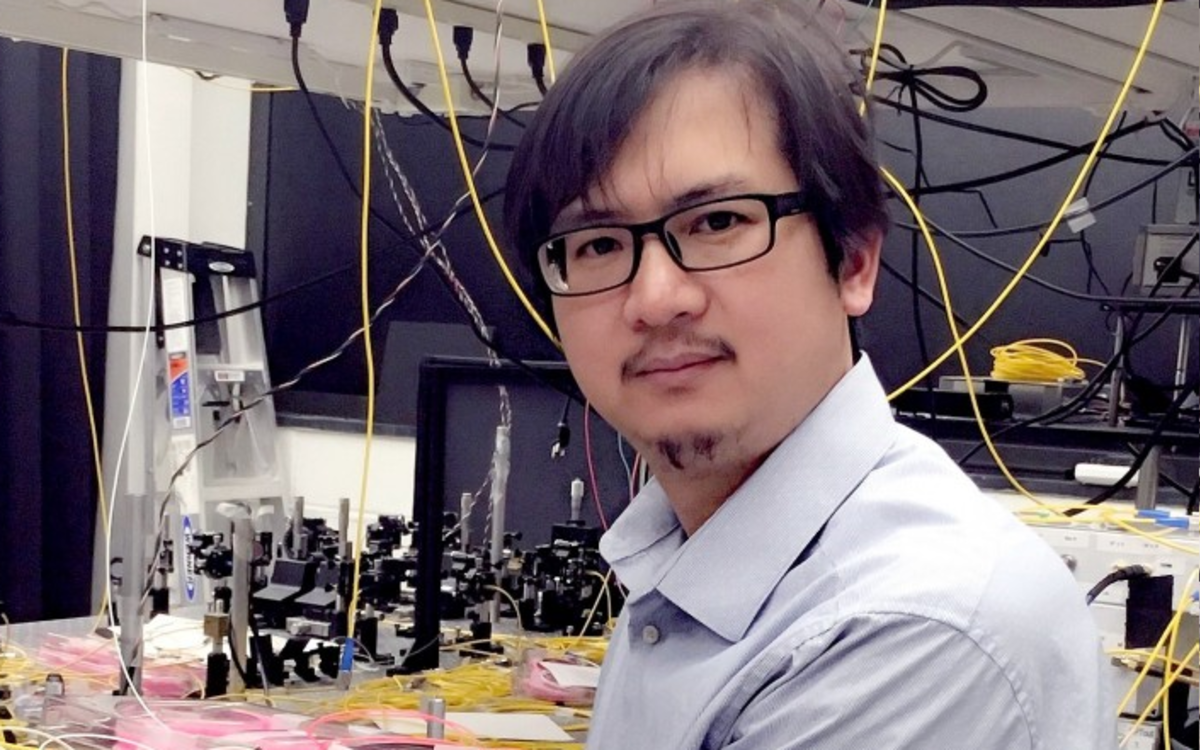Stevens' Prototype 'Quantum Lock' May Foreshadow the Next Super-Secure Applications
Stevens proof-of-concept demonstration successfully leverages quantum properties to secure the Internet of Things
A line of onlookers stands before a video camera in Stevens Institute of Technology's S.C. Williams Library, hopeful. Their task: crack a lock that could open, say, a safety deposit box or a bank account or a social security record. Each visitor stares intently into the camera lens. Nothing.
Then physics professor Yuping Huang strides up to the mark.
Click. The lock opens instantly.
"Fortunately," smiles Huang, "I am one of only three people whose face is allowed by this system to unlock this lock."
Facial locks are nothing new. Your phone probably has one, or soon will.
But what is remarkable is how this lock works — involving simultaneously creating twin particles of energy that somehow communicate with one another, across distances.
"These quantum properties are going to change the internet," predicts Huang, who directs the university's Center for Quantum Science & Engineering and works with graduate students including Lac Nguyen and Jeeva Ramanathan on the quantum lock project. "One big way it will do that is in the enabling of security applications like this one, except on much larger scales.
"If it turns out this technology can be deployed in our homes and offices, as we believe it can be, eavesdroppers will be nearly powerless to sneak into the ever-more connected networks of devices that help run our lives but also hold much of our personal data."
Welcome to the weird world of quantum communications.
Twins that always talk to each other
How does the system work?
When people stand in front of the camera attached to the lock, the Stevens setup captures information about each person's face and sends it over the internet to a server housed in a different part of the university. There, facial-recognition computations and matches are done using open-source software. (However, Huang's team is also working on bringing quantum physics to that step, too; stay tuned.)
While this may seem like a pretty standard computation so far, a key distinction occurs in its networking security: the data exchanged between the two parties is secured by fundamental laws of physics.
As facial photos are taken by the video camera, lasers in Huang's physics lab create twin photons — tiny, power-packed particles of energy — by splitting beams of light with special crystals.
The twin photons are then separated. One photon is kept in the lab while the other is sent through fiber-optic lines back to the library. Complex, secret "keys" are instantly generated as the photons are detected at each site; this process will ensure that the secure information meets up with a trusted partner at the other end of the transaction.
The keys serve as what's known in cryptography as a "one-time pad": a temporary, uncrackable code between the parties that encrypt the images and communications, preventing any hacker from intercepting them.
"We don't know why quantum properties work this way," explains Huang, shaking his head. "Even Einstein didn't know. But they do work, always, so far as we can measure. And a whole host of computing, financial and security applications will be coming down the road in our lifetime to leverage the power of those properties."
"This prototype demonstrates the drop-in compatibility of our quantum key-distribution system for secure networked devices," agrees Nguyen. "Wider adoption of this technology could protect the communications of corporations, governments and intelligence services.
"Some of the potential applications we already see include corporate and government data centers; military base communications; voting processes; and smart-city monitors, to name just a few."
The system could also bring secure privacy to the individual, adds the Stevens team, including for such applications as controlling systems in one's home remotely; communicating with a corporate office from home; or securing a home wireless network.



